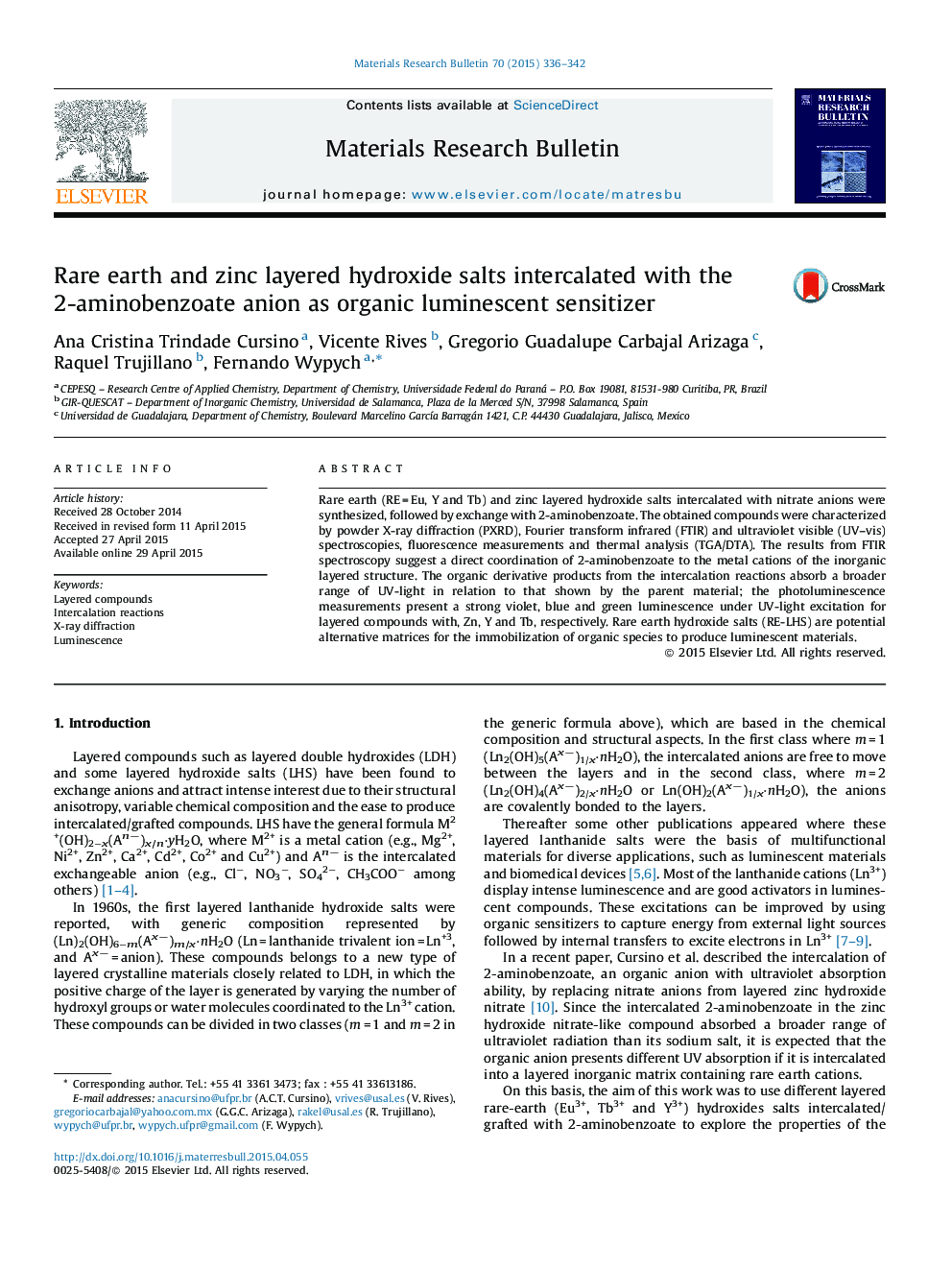| Article ID | Journal | Published Year | Pages | File Type |
|---|---|---|---|---|
| 1487300 | Materials Research Bulletin | 2015 | 7 Pages |
•Rare earth (RE = Eu, Y and Tb) and zinc layered hydroxide were synthesized.•Intercalated nitrate anions were exchanged by 2-aminobenzoate.•In all the 2-aminobenzoate containing compounds, the grafting reaction was detected.•The UV absorption ability was improved after the exchange reactions.•Rare earth hydroxide salts are potential matrixes to produce luminescent materials.
Rare earth (RE = Eu, Y and Tb) and zinc layered hydroxide salts intercalated with nitrate anions were synthesized, followed by exchange with 2-aminobenzoate. The obtained compounds were characterized by powder X-ray diffraction (PXRD), Fourier transform infrared (FTIR) and ultraviolet visible (UV–vis) spectroscopies, fluorescence measurements and thermal analysis (TGA/DTA). The results from FTIR spectroscopy suggest a direct coordination of 2-aminobenzoate to the metal cations of the inorganic layered structure. The organic derivative products from the intercalation reactions absorb a broader range of UV-light in relation to that shown by the parent material; the photoluminescence measurements present a strong violet, blue and green luminescence under UV-light excitation for layered compounds with, Zn, Y and Tb, respectively. Rare earth hydroxide salts (RE-LHS) are potential alternative matrices for the immobilization of organic species to produce luminescent materials.
Graphical abstractFigure optionsDownload full-size imageDownload as PowerPoint slideRare earth (RE = Eu, Y and Tb) and zinc layered hydroxide salts intercalated with nitrate anions were synthesized, followed by exchange with 2-aminobenzoate. The UV absorption ability was improved after intercalation/grafting in relation to that shown by the parent material.
